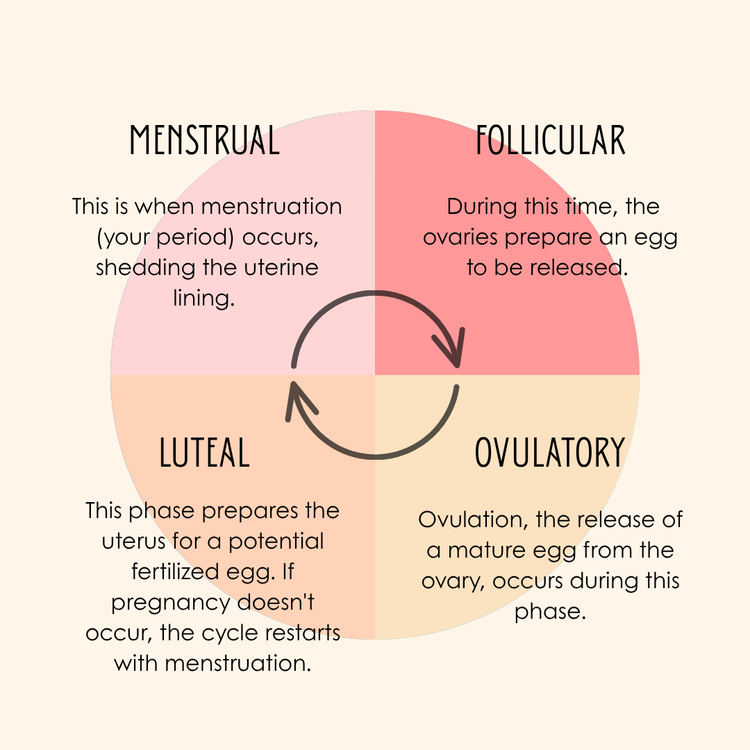The 4 Phases of your Cycle
Let’s Talk Menstrual Cycles 🩸✨The average menstrual cycle is about 28 days and includes 4 phases—each guided by hormonal shifts that prep the body for a potential pregnancy. Understanding your cycle can help you track physical and emotional changes more clearly. Here's a breakdown:
1. Menstrual Phase (Menstruation): This is when the uterine lining sheds, resulting in menstrual bleeding. It typically lasts for 3-7 days.
2. Follicular Phase: This phase begins with the start of menstruation and ends with ovulation. During this phase, the pituitary gland releases FSH, which stimulates the growth of follicles in the ovaries. One follicle becomes dominant and matures, producing estrogen. Estrogen helps rebuild the uterine lining.
3. Ovulatory Phase: This phase is marked by a surge in LH (luteinizing hormone), which triggers the release of a mature egg from the dominant follicle. Ovulation typically occurs around day 14 of a 28-day cycle.
4. Luteal Phase: Following ovulation, the ruptured follicle transforms into the corpus luteum, which produces progesterone. Progesterone further prepares the uterine lining for potential implantation of a fertilized egg. If fertilization doesn't occur, the corpus luteum breaks down, and hormone levels drop, leading to menstruation and the start of a new cycle
Methods for Tracking:
Use a physical calendar, a digital calendar, or a period tracking app to mark the first day of your period each month. Count the number of days between the first day of one period and the first day of the next to determine your cycle length.
Pay attention to changes in your cervical mucus throughout the month. During ovulation, it typically becomes heavier, wetter, and slipperier, like raw egg whites.
There are numerous apps available that can help you track your cycle, including Flo, Clue, and others. These apps often allow you to log symptoms, mood changes, and other relevant information.
Manual Tracking:
Even without an app, you can track your cycle by recording the start and end dates of your period, the length of your cycle, and any other relevant details like pain or mood changes in a notebook or on a calendar


